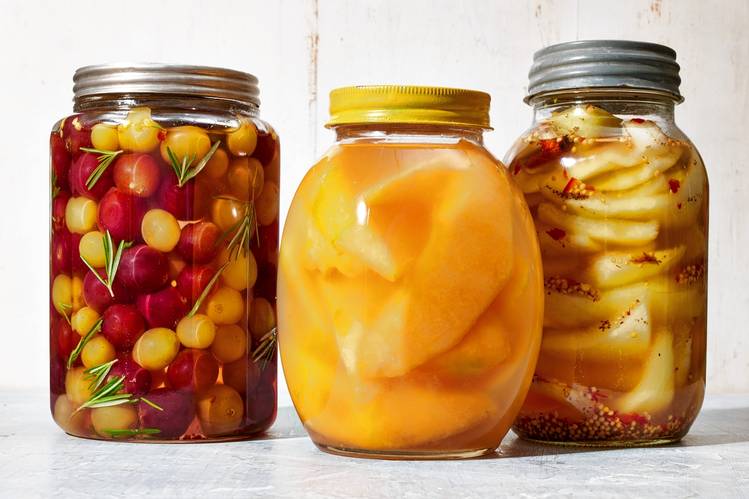How Do Home Cook Store Brine?
Brine, a solution of salt dissolved in water, is used in many ways. Brine has industrial and commercial uses. It’s essential for the production of chlorine. Many towns are also using brine on winter roads instead of rock salt. Brine is used before a snowfall instead to prevent freezing and, most importantly, stays on the road, so it can do its job. But most people know brine as a popular cooking method.
Cooks often use a brine solution to tenderize lean meats and add flavor to the final dish. It’s a popular way to make a tender and juicy Thanksgiving turkey. Soaking the turkey overnight in a solution of salt dissolved in water, often with crushed garlic cloves, peppercorns and other seasonings creates an exceptional holiday meal. Best of all, brined turkey requires no basting.
The cook is free to finish the rest of the meal without having to remember to baste the bird every half hour. Why not use this effortless technique year-round? A quick brine will tenderize a lean chicken breast of the pork chop. Storing brine is as easy as keeping it in the fridge. Special brine storage tanks aren’t required for the home cook.
Storing commercial and industrial brine is the responsibility of trained professionals. It’s essential to store commercial and industrial brine appropriately. Underground brine storage tanks are created by brine construction. The tanks have salt deposits and are filled with brine. The caverns are carefully monitored by experts to guarantee that industry standards are met and that quality is not compromised.
The underground storage tanks, also known as caverns, were constructed by producing salt deposits. Massive caverns in the salt deposits resulted. Those are filled with brine. The caverns can also be used for other liquid and gas products, including compressed air and crude oil.
But storing brine at home couldn’t be easier. The standard brine recipe is four tablespoons of salt for one quart of water. Some cooks add two tablespoons of sugar. Stir to dissolve the salt and sugar, if using. A simple, unused brine will keep indefinitely if stored in a sealed glass jar in the refrigerator. Never mix used brine with unused brine and dispose of used brine immediately after using.
In the home kitchen, brining is a useful technique to add moisture to lean cuts of meat that tend to dry out with cooking, even on a busy weeknight. For a quick workaday brine, pour refrigerated brine into a glass dish large enough to hold the meat and submerge chicken breasts or pork tenderloin chops in brine for up to an hour. To add extra flavor to the final dish, jazz up the simple brine with aromatics to enhance the final dish. Then, prepare the meat as usual.
Many cooks differ on whether or not to store brine in the refrigerator. Salt is a preservative and the high concentration of salt in a brine may kill any germs. Brining meats at home, however, is always done in the refrigerator. So most home cooks store extra brine in there so it’s ready to go. It’s an extra measure of safety, as well.
Brines are a versatile and essential solution with many uses, from industrial uses such as manufacturing essential chemicals or using a homemade brine to prepare a tender and juicy main course. It’s best to leave the storage of industrial brines to the professionals. At home, a sealed glass jar in the refrigerator will do nicely. Given how useful brines are at home and in industries, there’s no doubt that brine is a useful solution and how it’s stored is important.



